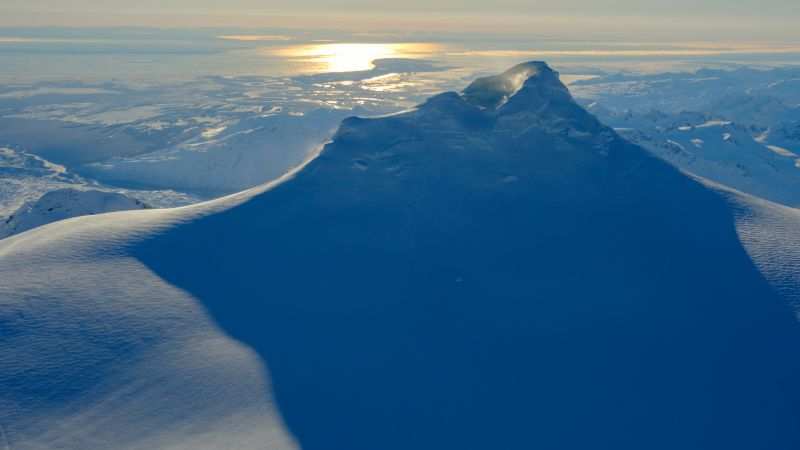Table of Contents
ToggleMount Spurr: An Active Volcano Near Anchorage
Mount Spurr, situated about 75 miles west of Anchorage, Alaska, is a volcano that has been showing signs of increased activity over the past ten months. Experts warn that it may be on the brink of an eruption, which could be significant given its proximity to Alaska’s largest city.
Signs of Unrest
Recent observations from the Alaska Volcano Observatory report that hundreds of small earthquakes have been detected beneath Mount Spurr. Earthquakes are one of the primary indicators of volcanic activity, often signaling that magma is moving deep underground.
What Experts Have Noticed
- Earthquakes: A surge of small, frequent earthquakes has been recorded in the area.
- Ground Deformation: Scientists have also noticed changes in the ground’s shape, suggesting that magma and other fluids are rising beneath the surface. This rise causes the ground to swell, a phenomenon known as ground deformation.
The Science Behind the Signs
David Fee, a scientist at the Alaska Volcano Observatory, explains that these changes are crucial in understanding what might happen next. As magma rises, it can heat nearby areas, resulting in warmer ground temperatures and even changes in local water bodies, like the formation of small lakes. Fee mentioned that there are warmer gases and water emerging from the volcano’s crater, which could indicate that volcanic activity is imminent.
Uncertainty of Eruption Timing
Despite observing these disturbances, predicting when Mount Spurr might erupt is difficult. Experts currently believe there is about a 50% chance of an eruption. It is possible that noticeable changes, such as increased water temperatures or the melting of nearby snow and glaciers, could occur before an actual eruption. However, scientists are committed to closely monitoring the volcano for any signs of escalating activity.
Potential Impacts of Eruption
If Mount Spurr were to erupt, it would primarily create two types of hazards:
- Ash Clouds: Eruptions can release ash clouds that may disrupt air travel, impacting not only nearby areas but regions hundreds of miles away.
- Ash Fall: Ash could settle on communities, including Anchorage, creating air quality and environmental concerns.
Fee noted that eruptions could consist of one or more explosive events lasting several hours, generating significant ash clouds. The uninhabited land surrounding Mount Spurr may also experience pyroclastic flows and mudslides, which are fast flows of hot gas and volcanic matter.
Historical Context
Mount Spurr is not a stranger to eruptions. It last erupted intermittently in the 20th century:
1953: First eruption led to ash reaching an altitude of 65,000 feet and deposited ash into Anchorage.
- 1992: The volcano erupted three times, with one event closing Ted Stevens Anchorage International Airport for 20 hours due to ash fallout.
Both of these eruption years demonstrate that even relatively small volcanic events can have far-reaching impacts on air travel and air quality.
What’s Next for Mount Spurr?
Currently, the volcano alert level for Mount Spurr is set at "advisory," indicating that it is above normal but does not pose an immediate threat to nearby communities. As the situation evolves, experts like Fee continue to evaluate data to provide information on risk factors and eruption potential.
Monitoring Strategies
Scientists use past eruption patterns to inform their predictions. They analyze existing data on seismic activity and ground deformation to determine whether imminent changes might suggest a higher likelihood of an eruption. While it’s possible to observe early warning signs, translating these observations into precise forecasts remains complex.
Conclusion
Mount Spurr is an active volcano showing several signs of unrest. While it might erupt again soon, possible impacts are being closely monitored. Importantly, since there are no communities close by, local safety is not currently threatened. However, air travel and regional air quality could be significantly affected should an eruption occur.
As scientists continue to assess the situation, staying informed about Mount Spurr’s status is essential for everyone in and around Anchorage, as well as those interested in geological phenomena.



